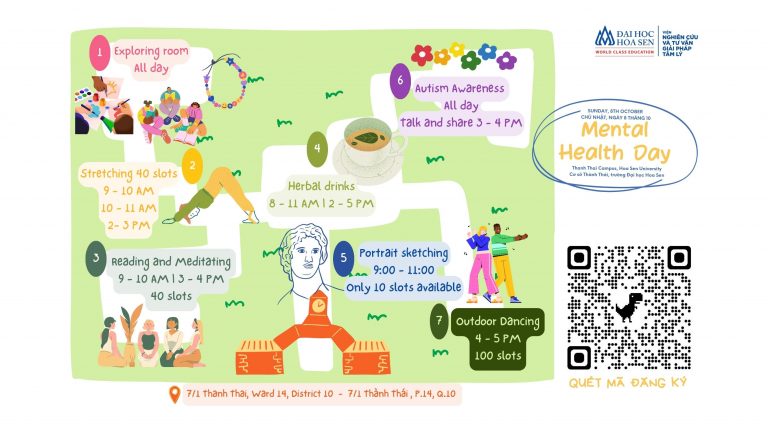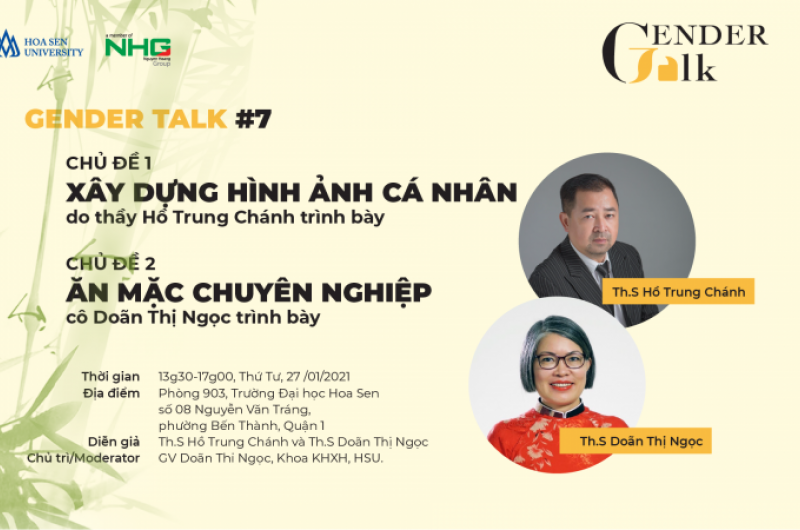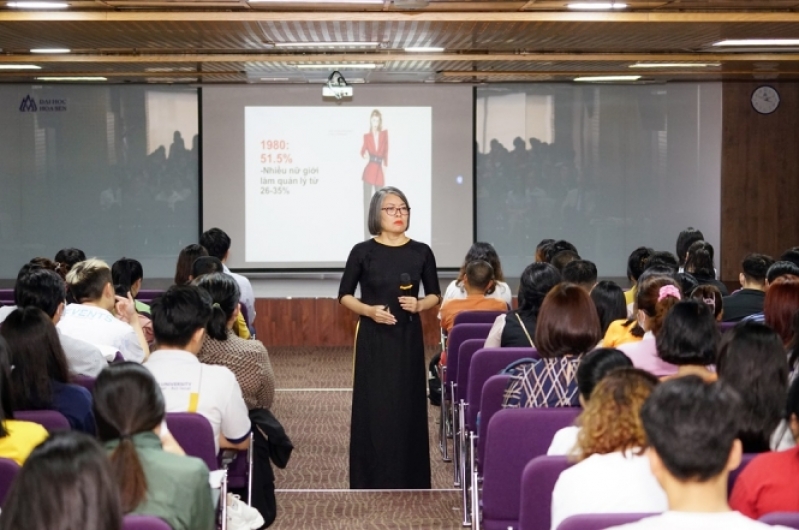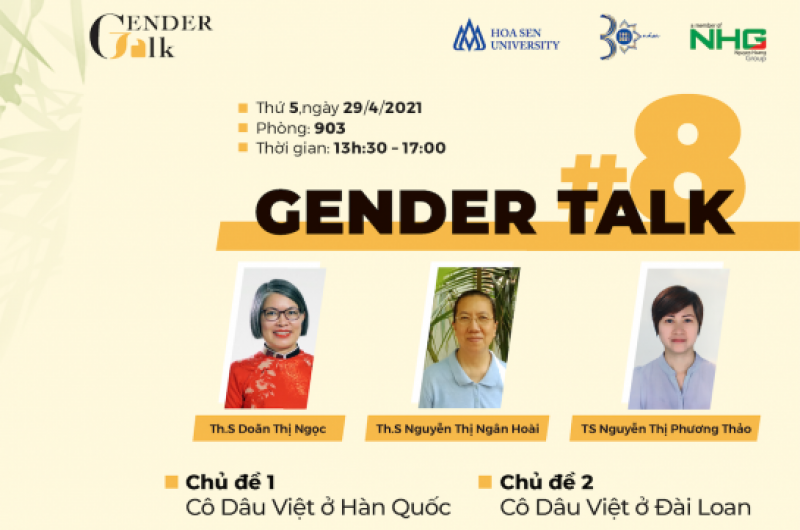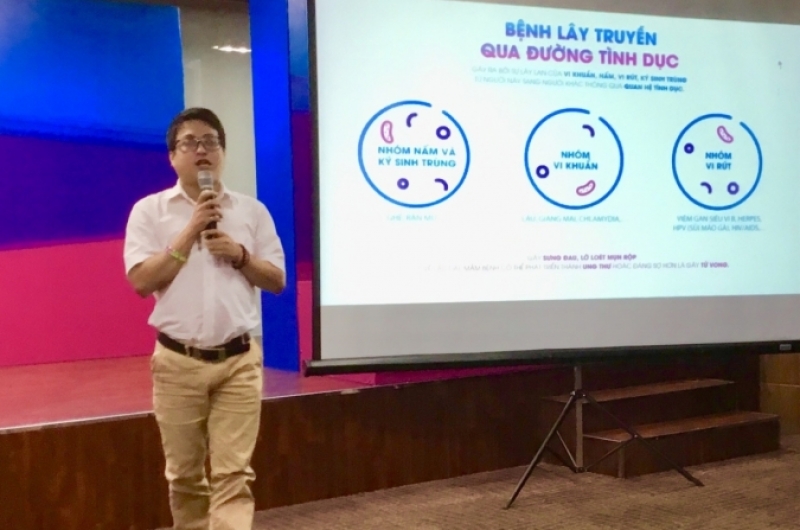To achieve gender equality, we must first tackle prejudice
October 4, 2021
Author: PhD. Beatrice Alba – La Trobe University
Translator: Doan Thi Ngoc – Teacher of Hoa Sen University
It is often assumed that most Western societies have achieved gender equality because women have all the same legal rights as men and sex discrimination in the workplace is illegal. However, feminists continue to argue that the battle for gender equality is not yet won.
So what is gender equality? And how and when do we know we have achieved gender equality?
What evidence is there for gender equality?
Evidence from many years of psychological research shows that bias against women and girls is widespread. For example, an experiment was conducted in which test participants were shown a promotional video about a business pitch with images related to a new business venture, narrated by the voice of a businessman. Participants were randomly assigned to an experimental group in which a male or female voice narrated a fairly similar pitch. When listening to and watching a male voice introducing the project, 68% of participants said that this project deserved to be funded, compared to only 32% of the participants when a female voice introduced the project.
Such gender effects occur even when they are only present on paper. This was demonstrated in another experiment where participants were asked to evaluate the same candidate for a laboratory manager position. This candidate’s profile was identical and tested under two different conditions based on whether the name was male or female. In each condition, the app randomly assigned whether this position belonged to “ John – A first name for men ” or to “ Jennifer – A first name for women .” Participants were led to believe that this male candidate was considered more competent than the female candidate, was likely to be hired, and was offered a higher starting salary and more career counseling. more professional than female candidates.
Even children show gender stereotypes. Another study talked about a main character who was “really smart” and asked children to guess whether this main character was a man or a woman. At age six, girls were less likely to guess that the main character was a woman, compared to boys who guessed that the main character was a man.
This scientific evidence demonstrates that people do discriminate based on gender, even when they deny that gender inequality exists in modern societies. This research also demonstrates that even when we are all equal, women are still disadvantaged compared to men in many areas. This may be because men are generally considered more capable, even when there is no evidence of superior skills.
Equality does not mean identical
One might object that there are meaningful differences between men and women and that this in turn is a source of gender inequality. Some people believe that equality is a misnomer, because men and women cannot be equal if they are different.
But when feminists talk about gender equality, they do NOT assume that men and women are IDENTICAL or indistinguishable in all behaviors, interests, and abilities. It also doesn’t mean that all gender differences must be eliminated, or that we must have equal gender representation in all areas.
For example, there are more male firefighters than female firefighters. Part of it may be due to gender differences in job preferences, or it may be partly due to the physical strength tests used in firefighter recruitment. Requirements such as the ability to lift a 72kg dummy and drag it for 45 meters. Many men can achieve this requirement, but essentially only a small number of physically fit women can do this.
Even without gender discrimination, we can expect to see fewer female firefighters simply because of such physical demands. But as long as these requirements are reasonable for the job and no woman is excluded because she is female, sexism is not an issue. Gender equality does NOT mean we have to have a 50/50 balance between men and women in every profession.
Equality or fairness?
Gender equality does not mean that men and women must always be treated the same. Due to certain differences in biological sex, the law provides different rights for men and women in some cases. For example, only women can request maternity leave, especially during pregnancy and childbirth.
In such cases, what is needed is not equal treatment but fair treatment. Fairness means recognizing that there are differences in abilities, which means that fairness often requires treating people differently so that they can achieve the same outcome. Sometimes fairness is necessary to achieve gender equality, but in reality, there are many cases where such differential treatment is not warranted.
Most women and girls have not been and will not be inherently disadvantaged by lack of ability, but they are unfairly disadvantaged by the failure to warrant differential treatment. It is not okay to assume that gender equality can be achieved by holding everyone to the same standards. This is highlighted in the evidence above, which is the unjustified gender bias that women and girls are constantly subjected to.
Priority policies aim to increase female representation and to combat systemic discrimination against women. Policy and action prioritize creating gender equity by overcoming the barriers that women face, simply because of their gender. If we could eliminate this gender-based discrimination, there would be no need for such preferential policies or actions.
Achieve gender equality
So, if gender equality does not mean that men and women must be the same or always require the same treatment to achieve fairness, then what does gender equality mean?
Gender equality is about treating men and women as having equal status and value. It is about judging a person based on their achievements, not viewing them as inferior or superior purely based on their gender.
Unfortunately, the evidence reviewed above shows that unconscious bias is still widespread and that we are often unaware of our own bias. We cannot say that we have achieved gender equality until this bias is overcome and we have eliminated the irrational prejudice that people have against someone just because they are female.
Equal rights are not enough. Inequality exists in our minds, in our biases and prejudices, and that needs to be changed.
The Conversation newspaper and author Beatrice Alba allowed Gendertalkviet to translate into Vietnamese and post the full text. On behalf of the Gender Talk Editorial Board, we would like to send our sincere thanks to the Author and The Conversation Newspaper for allowing us to republish the full text. The contributions of The Conversation Newspaper and the author are very valuable and meaningful.
Vietnamese Link: https://gendertalkviet.blogspot.com/2021/10/e-at-uoc-binh-ang-gioi-truoc…
Original link: https://theconversation.com/to-achieve-gender-equality-we-must-first-tackle-our-unconscious-biases-92848
This article is republished from The Conversation under a Creative Commons license.





